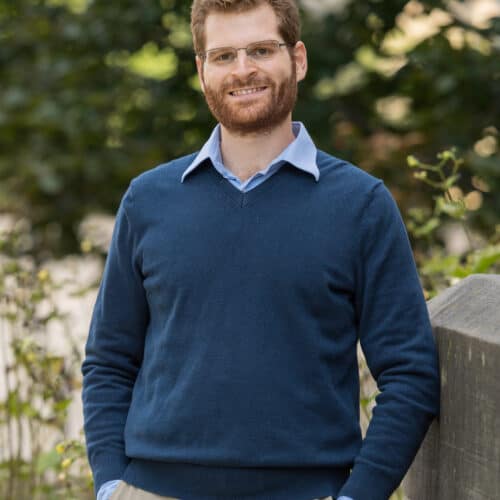Dr. Boehnke is currently Research Investigator, Anesthesiology Department, Chronic Pain and Fatigue Research Center at the University of Michigan, Ann Arbor (USA) where he studies cannabis and chronic pain. IASP talked with him about his research. For more information, please visit his webpage.
What topics does your current research/ clinical practice cover? How does this affect the public?
I took a winding path to the pain field. I was diagnosed with fibromyalgia ten years ago and subsequently spent a good chunk of time thinking about optimizing chronic pain management in my own life. I was lucky enough to have the support of an excellent physician (Dr. Daniel Clauw), who connected me with educational and clinical resources to help me figure out the tools that worked best for me.
During this time, I worked in the field of water quality, first testing water filters and their capacity to remove different contaminants and then moving into a PhD program to examine transmission of waterborne pathogens. In the second year of my PhD, I went to a talk on the effects of smoked cannabis on behavior and was struck by the paucity of content on potential therapeutic effects of cannabis – especially given that numerous states in the US had passed medical cannabis legislation. I wanted to investigate further, and collaborated with the owners of a local dispensary and Dr. Clauw on a pilot project surveying medical cannabis patients with chronic pain. As the project went on, I grew more interested in pain science and connecting what I learned to my personal experiences. After publishing the paper from the pilot, Dr. Clauw offered me a position in his group and I went to my first IASP conference. I’ve been working on cannabis and pain ever since.
What topics does your current research/ clinical practice cover? How does this affect the public?
I currently study how people use cannabis for chronic pain management and as a potential opioid substitute. I’m also interested in how cannabinoids (the active compounds in cannabis) impact different underlying chronic pain mechanisms. Given that cannabis (both medical and for adult use) is becoming rapidly more accessible, I’ve been lucky to have an opportunity to provide education for both clinicians and patients on pragmatic use and harm-reduction approaches for using cannabis in the chronic pain context.
Who is or was your mentor/Who inspires you? How has their research/ clinical practice impacted yours?
I’m lucky to have many mentors, but my first mentor in this research area was Dr. Daniel Clauw, who also worked with me clinically when I was diagnosed with fibromyalgia. His ability to quickly get to the heart of a scientific or clinical problem and then provide pragmatic, clear suggestions on how to proceed has had a deep impact on how I approach science and many aspects of life. His mentorship has helped me avoid getting lost in the weeds and keeping sight of the big picture. Dan is also generous, devoting substantial time and energy to helping guide myself and other mentees navigate the challenges of conducting research and academia more broadly. This combination of clear-headedness and openness of spirit has impacted how I want to embody being a scientist – both inside and outside of the lab.
What has been your biggest professional challenge/obstacle thus far and how did you handle it/overcome it?
Changing fields from water quality and applied microbiology to study chronic pain and cannabis was a steep learning curve. I had no background in pain science excepting my own personal experience and have had to learn a lot on the fly. Cannabis’s designation as a Schedule I and illicit drug added an interesting wrinkle to that transition. Luckily, I had the support of a fantastic team of mentors and colleagues at the University of Michigan Chronic Pain and Fatigue Research Center. They taught me about various aspects of pain and were excited to collaborate on projects related to cannabis in pain. The resulting interchange of ideas and new friendships turned this obstacle into a delightful educational opportunity that has resulted in a productive cannabis and pain research program.
Why did you become an IASP member?
I became an IASP member on the advice of Dr. Clauw and my mentorship team, as they all said that IASP was a great conference to learn about pain.
What do you do in your spare time? Do you have any hobbies, other pursuits, or hidden talents?
My wife and I have two children who are one and three years old, so we spend a lot of time playing with them. We have a large vegetable garden (~800 square feet), which is a delightful way to enjoy and share food with our friends and family. We also enjoy cooking – especially as the children slowly become more capable in that realm. I am a certified yoga teacher, and teach yoga every week at my house.
Do you have a favorite account to follow on social media—for science or other topics?
I stopped going on social media after noticing how much it divided my attention and made me less present with pretty much all aspects of my life. I do enjoy Ed Yong’s articles in The Atlantic.
Interested in becoming a member of IASP?
With your IASP membership, you gain access to:
- PAIN Journal
- Pain Education Resource Center (PERC)
- Access to 24 Special Interest Groups (SIGs)
- Online Career Center access
- Discounts on World Congress
- Network of thousands of pain researchers from around the world!
Membership dues are determined by income, the rates of membership can be found at this page of our website.


